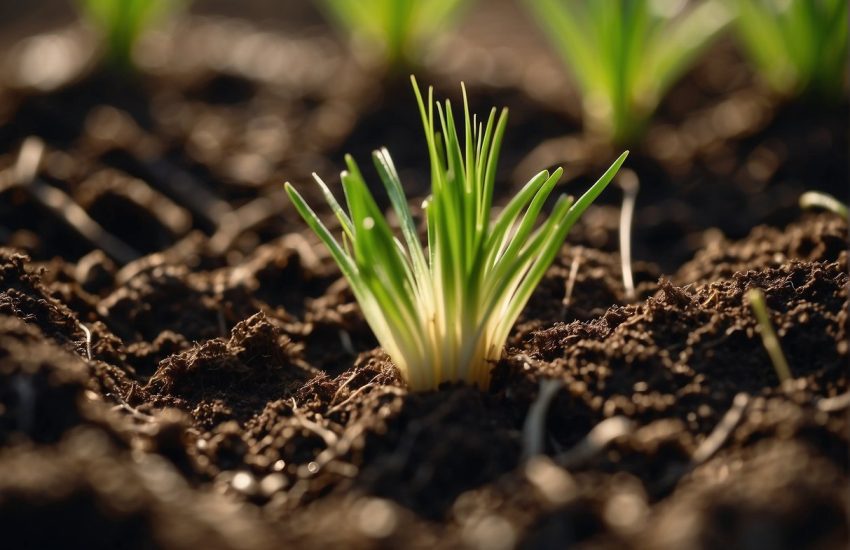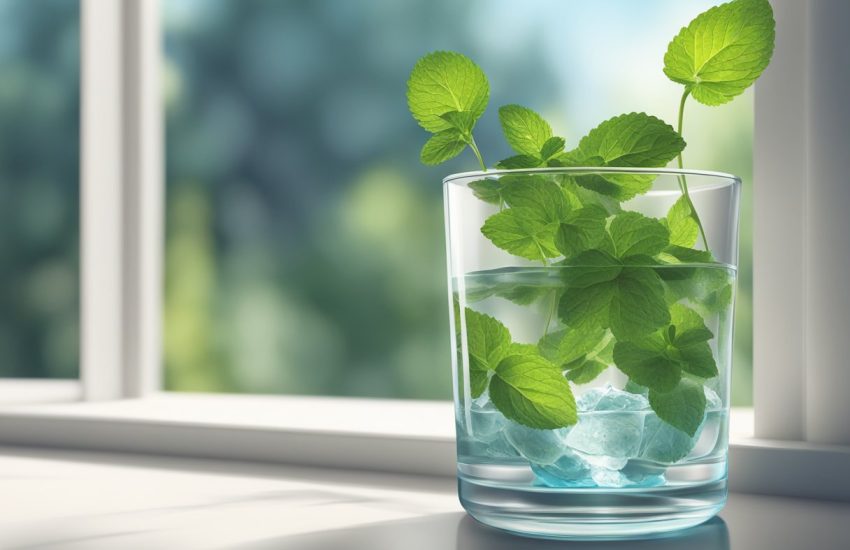Best Compost Materials for Massachusetts: Top Organic Choices for Effective Gardening
Composting in Massachusetts means picking materials that actually break down in our local climate and soil. You want a good mix of greens (nitrogen-rich) and browns (carbon-rich) to create nutrient-rich compost fast.
The best compost materials for Massachusetts include kitchen scraps, coffee grounds, leaves, grass clippings, and shredded paper.
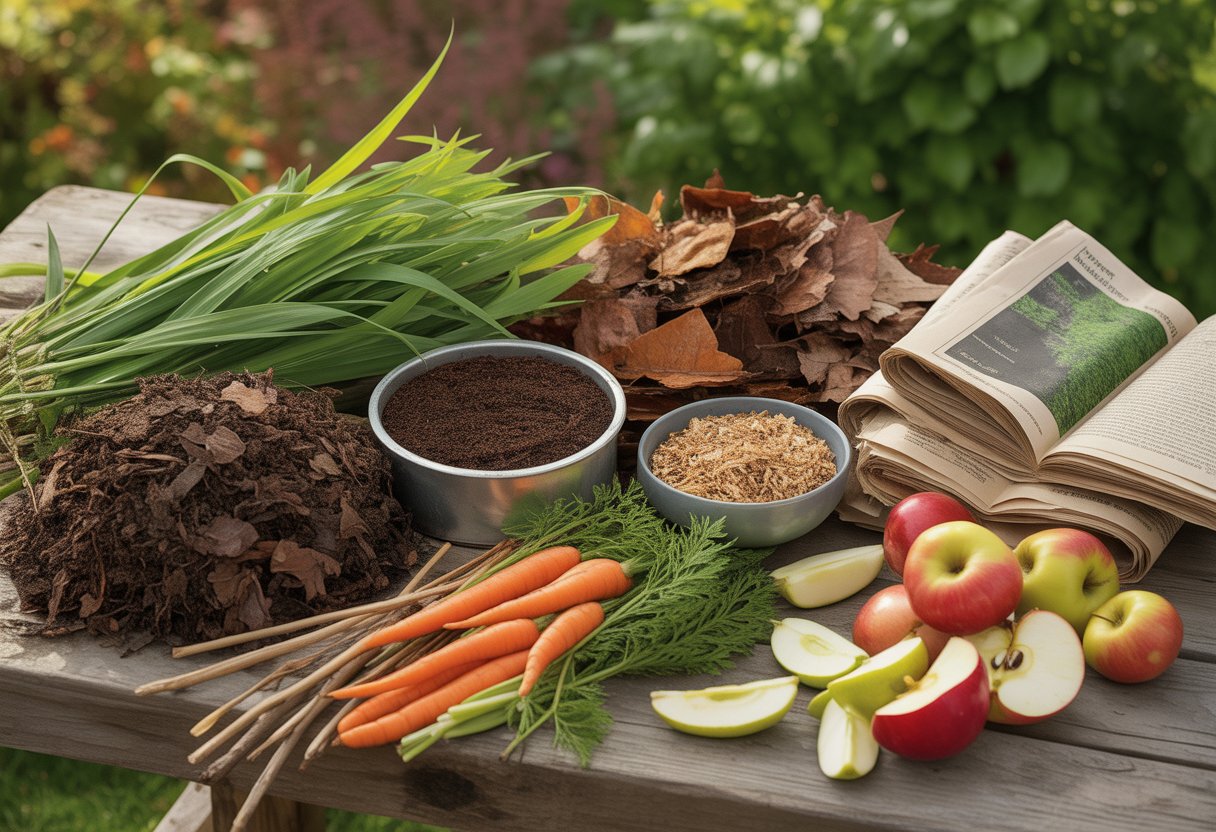
These materials offer nutrients and structure for microbes, which love the state’s wild temperature swings. Using local yard waste like leaves or pine needles can help adjust your compost’s acidity, which is honestly a nice bonus for your soil.
If you know which materials work best, you’ll avoid common composting headaches like bad smells or piles that just sit there. Let’s get into what you should toss in and what’s better left out for healthy compost in your Massachusetts garden.
Fundamentals of Composting in Massachusetts
If you want to compost successfully in Massachusetts, you’ll need to know your materials, get the balance right, and understand the biological magic happening inside the pile. Temperature, moisture, and our unpredictable climate all play a part in how fast your organic waste turns into black gold.
What Makes an Ideal Compost Ingredient
Ideal compost ingredients come from a mix of organic materials that break down easily. Around here, that usually means yard waste, food scraps, and leaves.
You’ll want to keep out things like pesticides or plastic, for obvious reasons. Shred woody stuff to help it break down faster. Fresh grass clippings bring in nitrogen, while dry leaves add carbon. If you keep moisture between 40-60%, microbes can really get to work.
The Massachusetts Department of Environmental Protection says to skip meat, dairy, and oils. That’s mostly to keep away pests and avoid nasty smells. If you pick the right stuff for your pile, it’ll stay active and balanced.
Balancing Carbon and Nitrogen Sources
A healthy compost pile needs both carbon-rich “browns” and nitrogen-rich “greens.” Browns are things like dried leaves, straw, and paper. Greens are fresh grass clippings and food scraps.
Shoot for a carbon-to-nitrogen (C) ratio of about 30:1. If you have too much carbon, your pile will drag its feet. If you go too heavy on nitrogen, you’ll get that ammonia smell nobody likes.
Mixing browns and greens in layers keeps oxygen flowing. Give the pile a turn now and then to keep things moving. If you keep an eye on this, microbes will stay happy and your pile won’t get all slimy.
Role of Microorganisms and Oxygen in Decomposition
Microorganisms, especially bacteria, start breaking down your compost. Fungi and other microbes come in later to tackle the tough stuff.
Oxygen is a must for these aerobic microbes. When you turn your pile, you let air in and keep things from going sour.
Massachusetts weather—wet springs, cold winters, hot summers—definitely affects how fast everything breaks down. If you keep your pile moist and turn it regularly, you’ll help the microbes do their job. That’s how you turn kitchen scraps and yard waste into something your soil will love.
Optimal Compost Materials for Massachusetts Gardeners
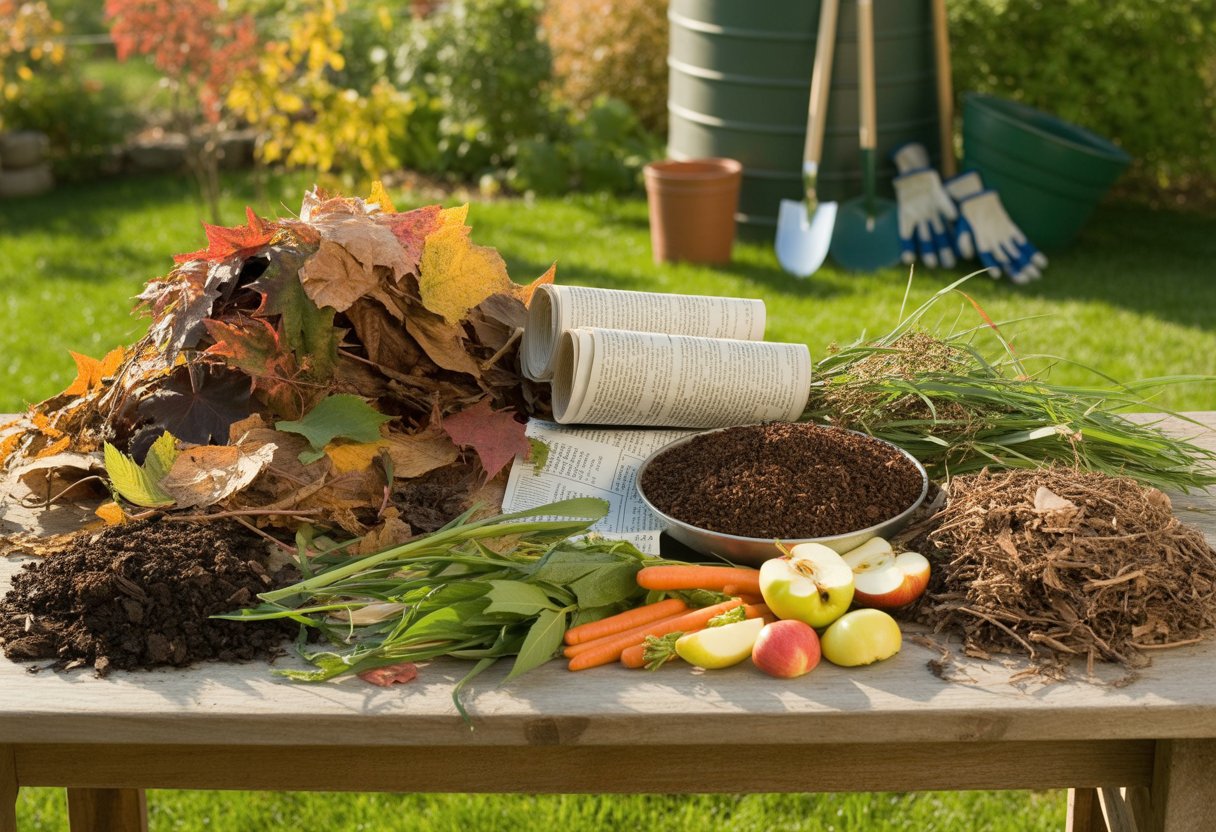
Massachusetts gardeners get the best results when they mix greens and browns. You want nitrogen-rich stuff with carbon-rich bulking agents to keep the microbes fed and the pile airy.
Vegetable Scraps and Food Waste
Vegetable scraps, fruit peels, and most kitchen waste make great nitrogen sources. They break down fast and bring in nutrients that boost compost quality.
Leave out meat, dairy, and oily foods to avoid pests and bad smells. Food waste from local gardens—think tomatoes, peppers, leafy greens—composts pretty easily. Chop things up if you can, and turn your pile often to keep oxygen moving.
Grass Clippings, Leaves, and Yard Debris
Fresh grass clippings are loaded with nitrogen, but you’ll need to mix in browns to stop them from getting slimy. Use leaves from your yard for carbon—they help balance moisture and nitrogen.
If you add weeds, make sure they haven’t gone to seed. Dry leaves also help with airflow and keep the pile from getting too packed. They’re honestly a must for handling all the yard debris we get during the year.
Straw, Mulch, and Other Bulking Agents
Straw bulks up your pile and adds carbon without causing compaction. It’s great for air flow and holding moisture. Mulch, especially wood chips from local trees, gives structure but breaks down slower, so it’s a good long-term carbon source.
These bulking agents keep your pile from getting dense and suffocating the microbes. You can usually find straw and mulch at local farms or garden centers—just make sure they’re free of herbicides.
Specialty Additions: Alfalfa Meal, Bone Meal, and Kelp Meal
Alfalfa meal brings in nitrogen and trace minerals, and it can speed things up. Bone meal adds phosphorus and calcium, which is great for roots, but you don’t want to overdo it.
Kelp meal gives your compost potassium and a bunch of micronutrients. It can help plants handle stress and rounds out your compost’s nutrition. These specialty additives are especially handy if you’re growing veggies or flowers.
Compost Management and Sustainable Practices
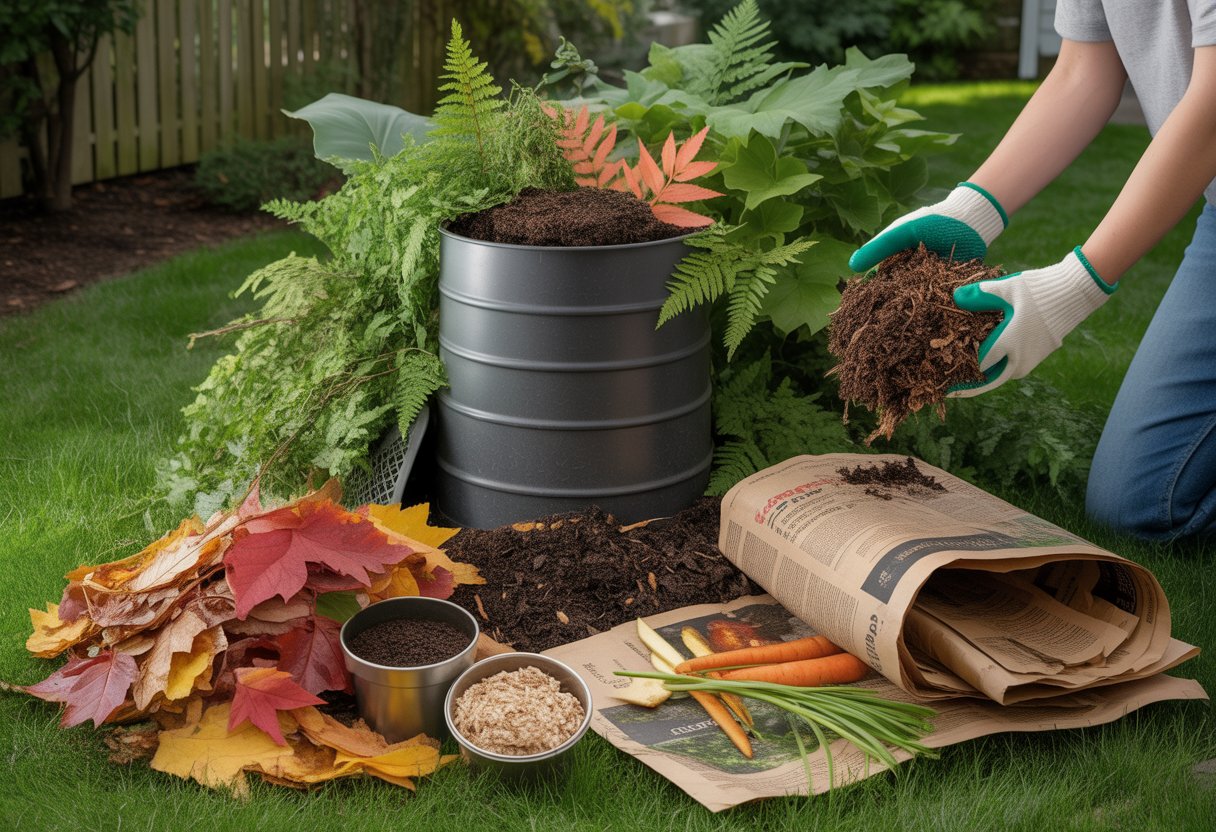
To get compost right, you’ve got to pay attention to balance, the environment, and pests. Optimizing moisture, oxygen, and your mix of materials keeps earthworms and microbes happy, while avoiding methane or nasty smells.
Maintaining the Perfect Balance of Ingredients
You need both “greens” (nitrogen-rich stuff like food scraps and grass) and “browns” (carbon-rich things like dried leaves and cardboard), aiming for a 2:1 ratio by volume. This mix gives microbes and earthworms what they need.
Compost should feel like a wrung-out sponge—damp, but not soggy. Too much water chokes out oxygen, and that slows everything down and makes it smell. Turning the pile brings in air and speeds things up.
If you can keep the pile between 130-150°F, microbes will work fast and pathogens die off. Checking temperature and moisture now and then keeps the process moving and cuts down on waste.
Reducing Methane and Environmental Impact
Methane pops up when compost goes anaerobic, meaning there’s no oxygen. If you keep your pile airy and not too wet, you’ll avoid that and help cut greenhouse gas emissions.
Composting keeps waste out of landfills and incinerators, which is better for the planet. Using mulch and finished compost boosts soil health, locks in more carbon, and means you’ll need less fertilizer.
Preventing Pests and Managing Odors
Pests show up if you toss in meat, dairy, or greasy foods. Keep those out, or bury them deep if you must.
If your pile gets too wet or packed, you’ll get bad smells. Fluff it up and add some dry browns to keep things fresh. A breathable lid or tarp keeps rain out and critters away. Earthworms help too—they aerate the pile and keep odors down as they wriggle through.
Using Finished Compost for Massachusetts Landscaping
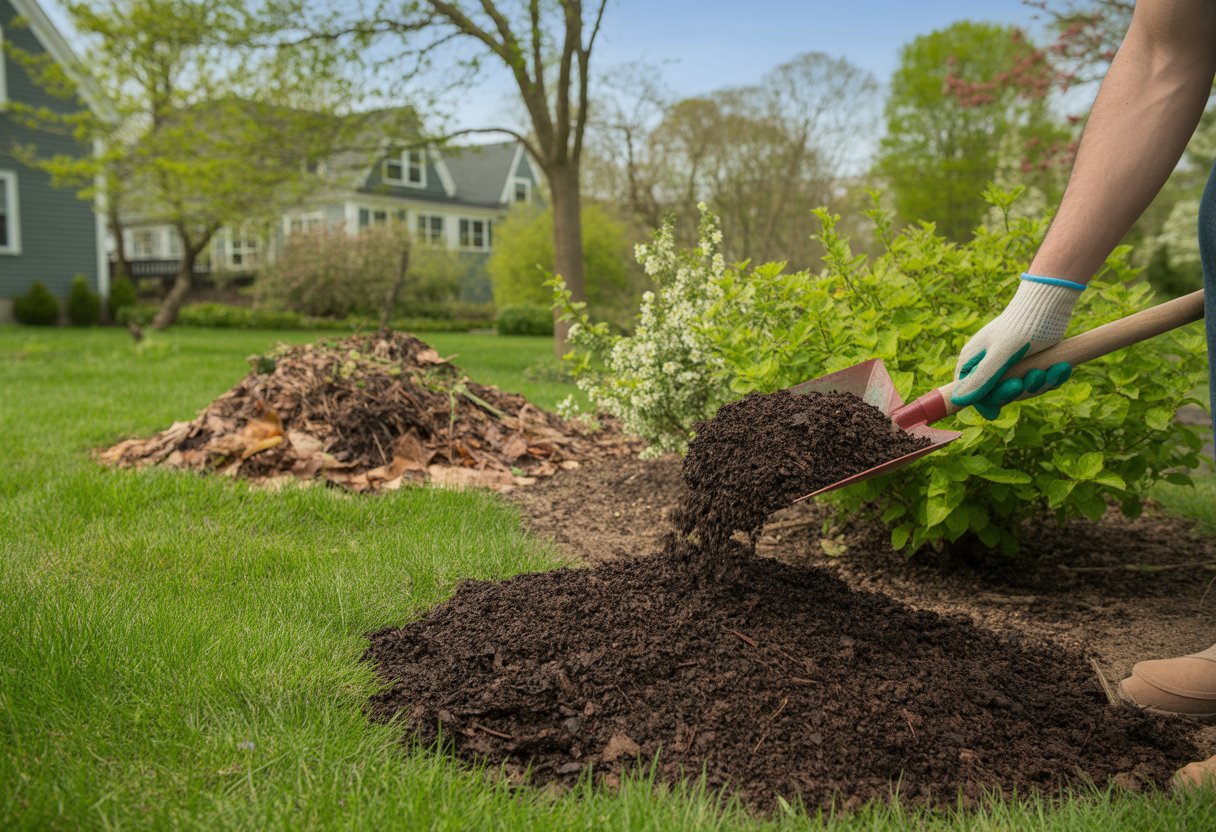
Finished compost makes soil better, adds nutrients, and helps plants thrive. It’s great for veggie beds, trees, shrubs, flower gardens, and even greenhouses—especially with how unpredictable Massachusetts weather can be.
Applying Compost to Vegetable Beds and Seedlings
Mix finished compost into vegetable beds at about 1:3 with your existing soil. This helps with fertility and drainage, and keeps moisture in during dry spells.
For seedlings, sift compost to get out the chunky bits. Use it as a top layer or mix it lightly into seed-starting soil. Compost brings in good microbes, so you won’t need as much synthetic fertilizer.
Enriching Trees, Shrubs, and Flower Gardens
Spread compost in a 2-3 inch layer under trees and shrubs, but keep it a few inches away from the trunk. This helps roots and keeps the soil loose, especially for new plantings.
In flower gardens, compost boosts nutrients and helps the soil hold water. If you mulch with compost every spring, you’ll see better blooms and fewer weeds—which is honestly a lifesaver with our changing seasons.
Compost for Spring Planting and Greenhouse Use
Before spring planting, mix compost into your garden beds. This warms the soil a bit and adds nutrients—always a good thing after those long, cold winters.
Compost gets early crops and hardy perennials off to a better start. It’s a simple step, but it really pays off.
In greenhouses, toss compost into potting mixes or use it as a slow-release fertilizer. It holds onto moisture and nutrients, which means you won’t have to water as often.
Seedlings and transplants seem to love it in those controlled environments. Growth just looks healthier, doesn’t it?

